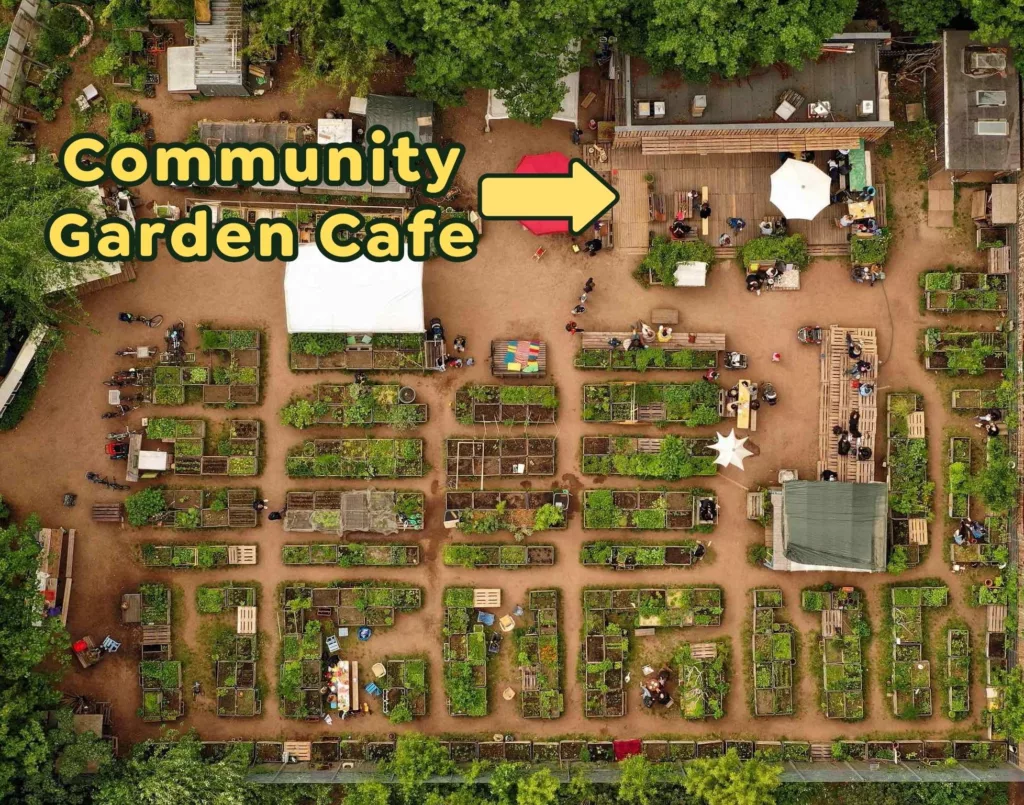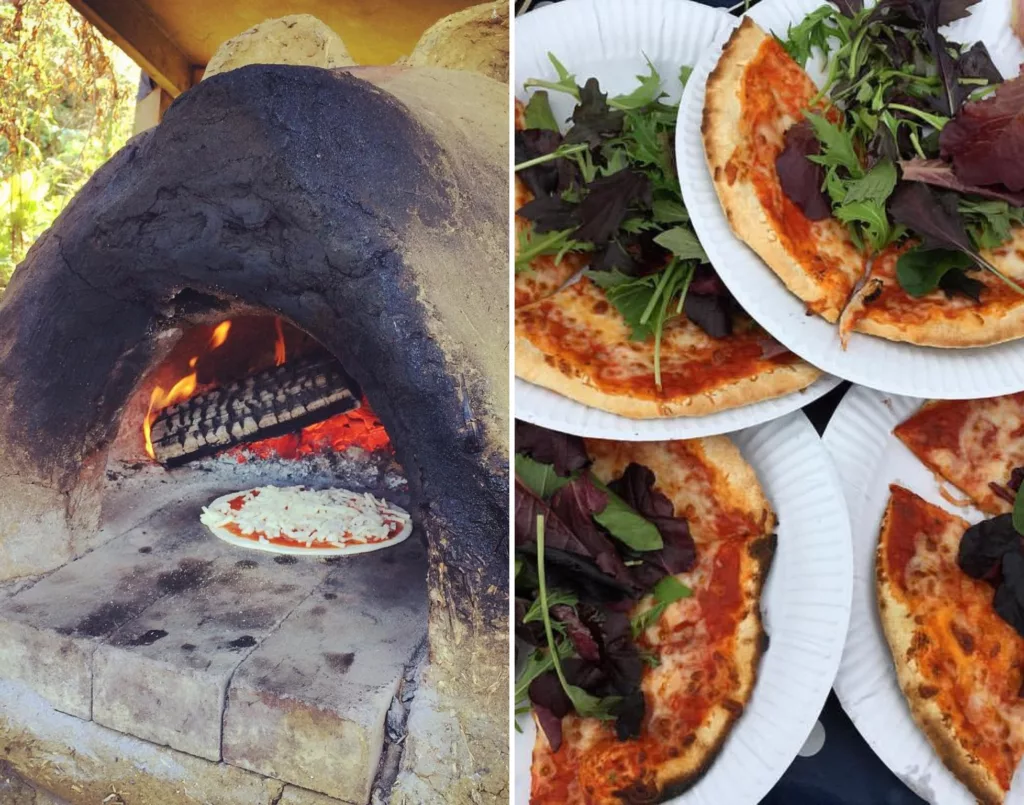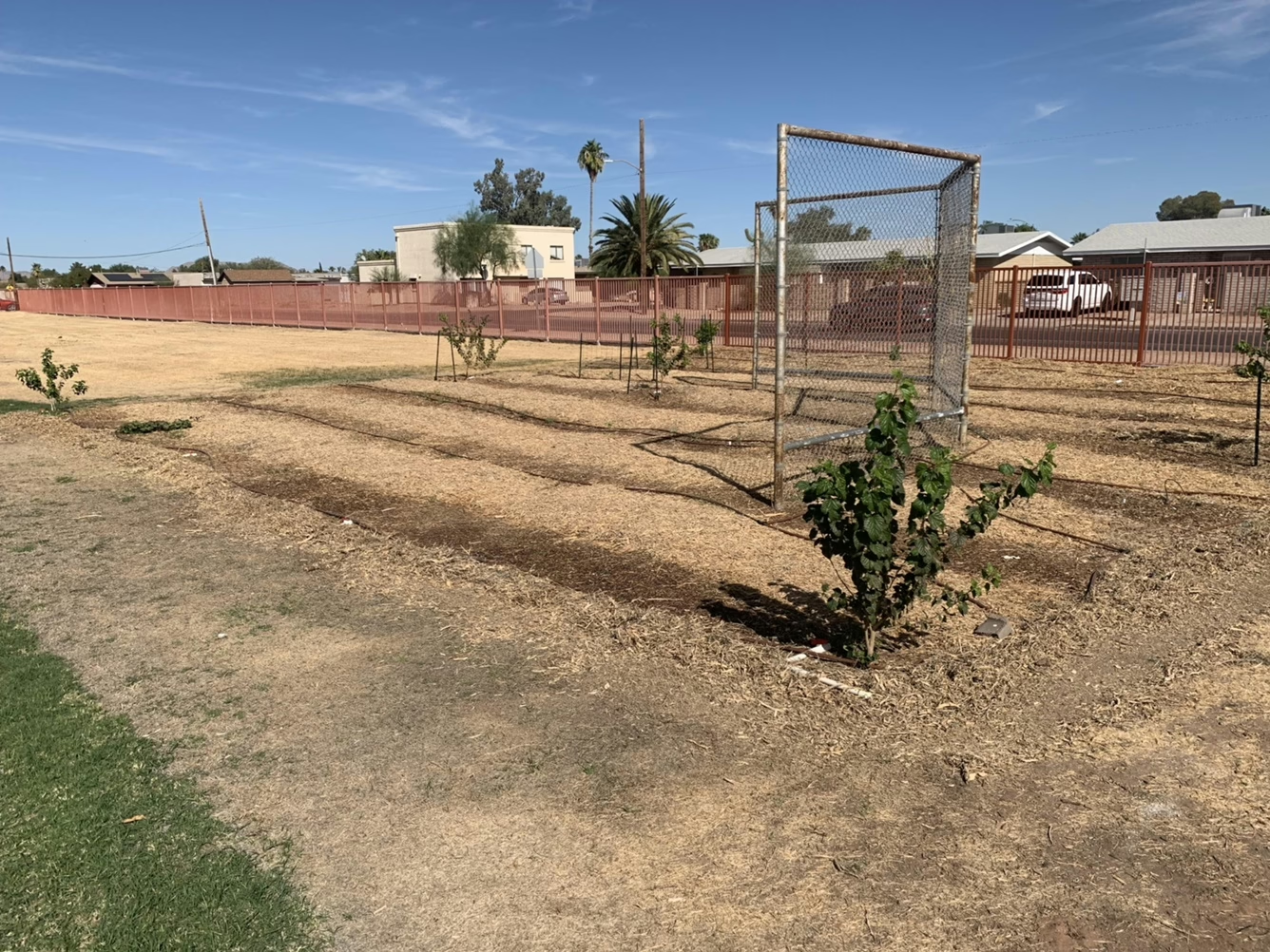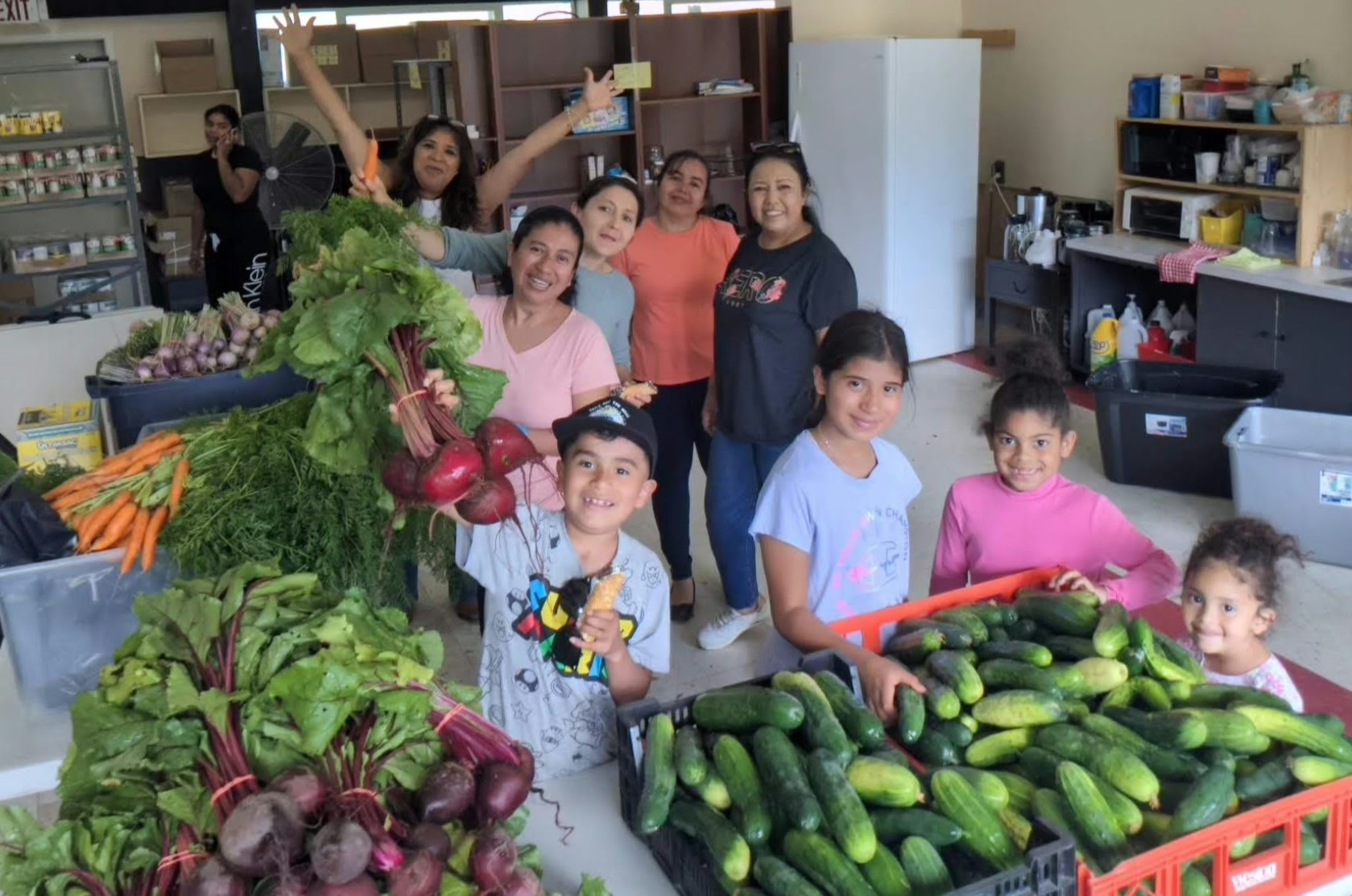Private outdoor kitchens are having a moment for those who can afford them. It only makes sense from the cook’s perspective. Why would you want to be cooped up indoors when the weather is nice and all the action with family and friends is outdoors? Outdoor communal cooking spaces also add to the eater’s experience in that it’s fun and appetizing to see food undergo the transformation from raw ingredients to a delicious meal.
What’s true for private outdoor cooking areas also holds for public ones. Community gardens and farms have long been celebrated as spaces where individuals come together to cultivate crops, share knowledge, and foster community ties. However, the potential of these spaces extends beyond just growing food. Incorporating communal cooking and eating areas can amplify the benefits of community gardens, transforming them into holistic hubs of food education, preparation, and consumption.
Benefits of Communal Cooking and Eating Areas
- Holistic Food Education: By integrating cooking and eating spaces, community members can experience the full journey of food, from seed to plate. This fosters a deeper understanding of food sources, nutrition, and sustainability.
- Community Building: Sharing meals is a universal way of building relationships. A communal kitchen or eating area can become a focal point for community gatherings, fostering stronger ties among members.
- Promotion of Healthy Eating: Direct access to freshly harvested produce and a space to prepare it encourages healthier eating habits. It also offers an opportunity to host workshops on nutrition and healthy cooking.
- Economic Benefits: Pooling resources for communal meals can be cost-effective. Additionally, such spaces can host events or workshops, potentially generating revenue for the garden or farm.

Challenges to Consider
- Space and Planning: Not all community gardens or farms have the space for a full-fledged kitchen. Proper planning is essential to ensure that the cooking area integrates seamlessly with the existing garden without disrupting cultivation areas.
- Cost: Setting up a communal kitchen can be expensive, especially if it involves constructing a new structure or installing utilities.
- Maintenance and Safety: Kitchens require regular upkeep to ensure cleanliness and safety. This can pose an additional responsibility for community members.
- Regulations: Depending on the location, there might be health and safety regulations to consider, especially if the kitchen is used for commercial purposes.
Low-Cost, Low-Risk Options
- Outdoor Grills or Barbecues: A simple and cost-effective way to introduce cooking in a community garden. Perfect for occasional community cookouts.
- Cob Ovens: These are natural, clay ovens that can be built with local materials. Ideal for baking bread or pizzas during community events.
- Portable Cooking Stations: Using portable stoves or burners can be a flexible solution, allowing for cooking workshops without permanent installations.
- Shared Meal Days: Instead of a dedicated cooking space, gardens can host potluck-style events where members bring and share dishes, ideally made from the garden’s produce.

Success Stories
- The Edible Schoolyard – Berkeley, California, USA: Founded by chef Alice Waters, The Edible Schoolyard integrates a garden with a kitchen classroom. Students learn about the entire food cycle, from planting to cooking. This model has not only educated students about food but also transformed the school’s approach to lunch, emphasizing fresh, locally-sourced ingredients.
- Golden Hill Community Garden – Bristol, UK: This urban oasis offers a variety of gardening opportunities and boasts an outdoor cob oven. The oven becomes a focal point during community events, where freshly baked bread and pizzas, made from garden produce, become a medium for community bonding.
- Himmelbeet – Berlin, Germany: Serving as a neighborhood social hub, the Himmelbeet garden features individual and communal plots, an extensive event program centered around gardening and the environment, and a café established in 2015 where community members can relish dishes made from garden-grown produce in a building constructed from recycled materials.
Conclusion
Incorporating communal cooking and eating areas in community gardens and farms can elevate the potential of these spaces, making them more than just places to grow food. While challenges exist, with proper planning and community involvement, these spaces can become vibrant hubs for food education, preparation, and community building. Whether it’s through a state-of-the-art kitchen or a simple cob oven, the essence lies in bringing people together to celebrate the joy of food and community.





